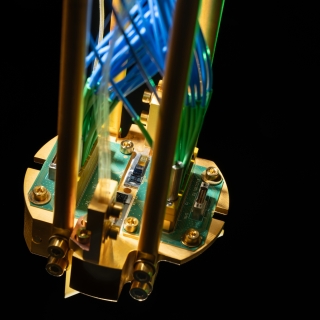

Emerging Technology
The Technology Office promotes research and development of new technologies and engineering solutions of growing relevance to national security. Staff are working at the frontiers of technology to transfer the latest advances to the Laboratory’s mission areas. Some investments, such as quantum information systems, may take years to come to fruition. In areas of increasing importance to the nation, such as energy and autonomy, the Laboratory is taking a lead role. We are supporting R&D in the following areas:
- Advanced devices
- Advanced materials and processes
- Autonomous systems
- Biomedical science and technology
- Energy
- Engineering
- Homeland protection, air traffic control, and humanitarian assistance & disaster relief
- Quantum systems and science
Featured News
Featured Projects

sensing
Precision Clock Synchronization for Advanced Sensing
Combined quantum networking and lasercom optical signaling techniques could impact advanced sensing applications such as geolocation with distributed systems.

advanced materials
Materials by Design
A new approach to materials discovery aims to expedite the process of deploying new materials for specific mission needs.

disaster relief
DisasterSat
Dedicated satellite imaging could help coordinate emergency response to disasters.

autonomous systems
Coordinating Teams of Autonomous Systems
We developed new distributed coordination algorithms for deploying multiple autonomous systems from a single set of operator commands.

artificial intelligence
Human-AI Performance Incubator
A new collaboration space is empowering researchers to drive innovations in human-AI teaming.
Publications
Multilayer microhydraulic actuators with speed and force configurations
Mar 11
Microsyst. Nanoeng., Vol. 7, Art. No. 22, 2021.
Operation of an optical atomic clock with a Brillouin laser subsystem
Dec 9
Nature, Vol. 588, No. 7837, 2020, pp. 244-9.



